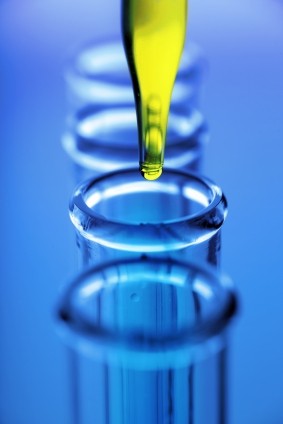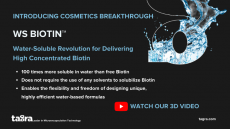“Human lung” model developed to replace animal testing
The Lung & Particle Research Group at Cardiff University have developed this new method, which involves cultivating a number of different types of cells into “micro-lungs” which can mimic the action of organs. Their research was first published as 'In vitro models of inhalation toxicity and disease' in the journal 'Alternatives to Laboratory Animals' 37, 2009.
Models which can detect toxicity to the lung have previously been used by the cosmetics industry, but the team’s version also allows metabolic processes, such as the action of the liver, to be included in the model, allowing researchers to detect whether a substance will be harmful once broken down inside the body.
This process is useful for testing aerosol products such as hairsprays, perfumes, body sprays, deodorants and perfumes. For this development, the team was awarded one of the Lush Science Prizes for innovation in cruelty-free cosmetics on November 13.
Dr Kelly BéRubé, the director of the Lung and Particle research group at Cardiff University’s School of Biosciences, explained to CosmeticsDesign-Europe.com: “We use medical waste from cell banks, which allows us to cultivate up to 500,000 cells from a single culture. This also means we can order or pre-screen our subjects, so for example we could choose to test all people of a particular gender, or with a pre-existing medical condition.”
“Why use an animal lung when a human one will do?”
With regulations limiting the use of animal testing in the European Union, and increasingly in other regions as well, more and more beauty companies are turning to modeling to anticipate the toxicity of new products.
Dr Kelly commented: “From a single subject, we can grow 400 miniature lungs for only around 2000 pounds. When you consider that with animal testing you have to keep several animals alive for as much as two years, it’s a very cost effective method.”
“We can also produce results in as little as 24 hours or a few weeks, and the results will be more accurate. We have a saying; why use an animal lung when a human one will do?”
The process
The lung model uses a “modular” arrangement of cells which allows a model of organ systems to be examined: for example the effect of a particle entering the lungs, passing into the bloodstream then reaching the liver.
This is more effective than most alternatives because it allows the researcher to detect if a substance which is might not be harmful to cells in the lungs will become dangerous once broken down inside the body. The team has also succeeded in producing cells which will survive for longer than those in most comparable procedures.
Dr Kelly anticipates that the models can also be used to help develop cures for various forms of lung disease, which the World Health Organization predicts to be one of the world’s biggest killers by 2030.


















